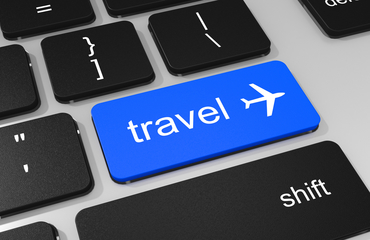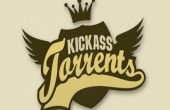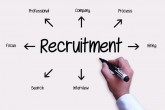Travel and the 2 year rule for Contractors
Article Author: Graeme Bennett Posted on: September 10, 2014 (Full Author Bio in the box on the right side) 7872 views
7872 views

Q: Is Travel and the two year rule a completely different issue to IR35?
A: Yes, it is completely different Legislation. Travel can still be claimed from your ltd company even though you operate inside the IR35 Legislation.
Q: Does this Rule also cover subsistence?
A: No. It is specifically for travel to a main work location. The whole basis of this legislation is to give workers some relief when working at a temporary workplace. Beyond 24 months, this workplace is no longer temporary but classed as permanent, unless less than 40% of the time is spent on that specific workplace.
Q: How long can a worker claim tax allowable travel expenses?
A: A company worker can only claim tax allowable travel expenses for a maximum of 2 years when working on the same site when 40% or more of the time worked is spent on this same client site (nb not the same client). HMRC EIM32080 : “The test is whether the employee has spent, or is likely to spend, 40% or more of his or her working time at that particular workplace over a period that lasts, or is likely to last, more than 24 months. Where that is the case the workplace is not a temporary workplace and so it is a permanent workplace. Travel between that place and home will be ordinary commuting and so is not deductible.”
Q: What if I stay in a hotel?
A: Home to the site is different from hotel to the site if a time of greater than 40% is involved after 24 months. So after 2 years in my opinion you would still be able to claim the cost of the journey to and from your hotel to the client site and to and from home to the hotel.
This rule is modified where the employee works at a succession of workplaces but the change of workplace has no substantial effect on the employee’s journey to work. All such workplaces are treated as the same workplace for the purpose of the legislation, see EIM32280 and example EIM32089. The guidance also confirms that, for the purposes of proving that a contractor’s workplace is their permanent workplace, HMRC can “ignore a change of workplace if that change does not have any substantial effect on the employee’s journey to work.
Q: What about travel between different clients sites?
A: Travel between different client sites is always allowable.
40% is after the 2 years has elapsed.HMRC’s guidelines above state that “The test is whether the employee has spent, or is likely to spend, 40% or more of his or her working time at that particular workplace over a period that lasts, or is likely to last, more than 24 months”. For the purposes of this legislation you are classed as an “employee” (even though you may not technically be an employee if you are owner/director/worker of your own ltd company). With regards to records, I would advise you to keep comprehensive records of where you are based after the 24 month period has ended as the onus will be on you to convince an HMRC Inspector that you have spent less than 40% of your work time at a given client site.
Q: Can I claim tax allowable travel for up to 2 years even though the contract my company has entered into with its client lasts for two and a half years?
A: No. As soon as the contract/series of contracts exceeds 2 years then no tax allowable travel expenses are claimable unless less than 40% of your working time is spent there over a given period.
Q: What does “workplace rule” mean?
A: Remember this is a workplace rule (not working for the same client rule). HMRC would consider it to be the same workplace if it were in the same neighbourhood eg you couldn’t just move to a different building a few hundred meters away and claim it to be a different workplace. As soon as the contract exceeds 2 years and you are still working at the same place, it is no longer classed as a temporary workplace unless less than 40% of your working time is spent there over a given period. Similarly, if you change client but remain in the same building, then the 24 month rule is not reset.
Q: What if I want more information from HMRC?
A: This can be found online at http://www.hmrc.gov.uk/manuals/eimanual/EIM32080.htm HMRC has an example of an IT contractor working in London’s financial district. This is discussed in an HMRC manual, which is designed to provide guidance to its own inspectors on how to apply the travel expenses rules legislation – Section 339(7) of the Income Tax (Earnings and Pensions) Act 2003.
Q: What about other related issues?
A:
1. Business miles using own car- in each tax year (6 April to 5 April) each person can claim 45p per mile as the maximum allowable for first 10,000 miles (25p per mile thereafter). 2p per mile can also be reclaimed for VAT if you/your company is not on the VAT Flat Rate Scheme.
2. Mileage log for each journey should always be maintained in case HMRC ask for detail of journeys.
3. When working away from home on business a worker can claim £5 tax/NI free per night from the company for incidental expenses (no receipts needed) in addition to subsistence costs (£10 if working outside the UK).
4. Note that the above doesn’t cover rent costs/hotel costs where accommodation is rented near the project of work because your home is too far away to commute. Accommodation and receipted evening meals can continue to be claimed via your company as a tax allowable expense.
Latest Posts
-

Staying HMRC Compliant: VAT Returns Have Chan...
by Amanda Swales on January 29, 2020 Accounting & Tax -

Self Assessment Tax Return 101 - Filling In T...
by Amanda Swales on January 15, 2020 Accounting & Tax -

-



 Acronyms to increase efficiency in the workplace
Acronyms to increase efficiency in the workplace  KickAss Torrents files a petition to free Artem Vaulin
KickAss Torrents files a petition to free Artem Vaulin  Why Google My Business is an essential tool for Small Businesses?
Why Google My Business is an essential tool for Small Businesses?  How good are Recruiters at matching Contractor skills to roles
How good are Recruiters at matching Contractor skills to roles  Considerations When Outsourcing Your Payroll
Considerations When Outsourcing Your Payroll  Five Good Reasons Why Running A Limited Company Benefits Contractors
Five Good Reasons Why Running A Limited Company Benefits Contractors  Recruitment Outsourcing Why Are Recruiters Unreliable
Recruitment Outsourcing Why Are Recruiters Unreliable  Brexit and the insolvency sector
Brexit and the insolvency sector  Would you like your family to maintain their lifestyle should the worst happen to you
Would you like your family to maintain their lifestyle should the worst happen to you  How to create a productive home office space
How to create a productive home office space  Travel and the 2 year rule for Contractors
Travel and the 2 year rule for Contractors  Free Must Have SEO and Social Media Tools for Small Businesses
Free Must Have SEO and Social Media Tools for Small Businesses  5 Things Every Recruiter Should Do
5 Things Every Recruiter Should Do  Choosing the right bank for your limited company
Choosing the right bank for your limited company  Amazing Social Media Facts, Statistics and Figures for 2013
Amazing Social Media Facts, Statistics and Figures for 2013  10 Best and Essential WordPress Plugins for Small Business Websites
10 Best and Essential WordPress Plugins for Small Business Websites  The New IR35 - Intermediaries' Legislation Calculator for Contractors
The New IR35 - Intermediaries' Legislation Calculator for Contractors  Why Grammarly is a must have tool for Businesses and Website SEO?
Why Grammarly is a must have tool for Businesses and Website SEO?  Keeping Your Social Media Content Appropriate
Keeping Your Social Media Content Appropriate 

